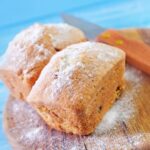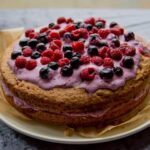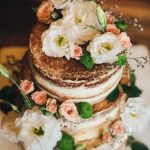Are you looking to take your cake decorating to the next level? Learn how to make good icing for cake decorating and impress your friends and family with professional-looking desserts. The right icing can make all the difference in the appearance and taste of your cakes, so it’s essential to master the art of creating delicious and beautiful icing.
When it comes to cake decorating, the quality of the icing is crucial. Whether you’re a beginner or an experienced baker, understanding the different types of icing, essential ingredients, and various decorating techniques is key to achieving stunning results. In this article, we’ll explore the importance of good icing in cake decorating and provide step-by-step instructions for creating perfect buttercream and royal icing.
In addition to discussing different types of icing, we’ll also delve into troubleshooting common issues that may arise during the icing process. By following our tips and techniques, you’ll be well on your way to creating professional-looking cakes that are sure to impress. So let’s get started on mastering the art of making good icing for cake decorating.
Types of Icing
When it comes to cake decorating, the type of icing you use can make all the difference in the final product. There are several types of icing to choose from, each with its own unique texture and flavor. By understanding the different options available, you can make an informed decision on which type of icing will best suit your cake decorating needs.
1. Buttercream: This classic icing is made from butter, powdered sugar, and flavorings such as vanilla or chocolate. It is known for its creamy texture and ability to hold intricate designs when piped onto a cake. Buttercream is versatile and can be easily flavored and colored to match any theme or occasion.
2. Royal Icing: Made from powdered sugar, egg whites, and sometimes lemon juice, royal icing dries to a hard, smooth finish that is perfect for intricate designs and decorations. It is commonly used for detailed piping work and creating edible embellishments like flowers and intricate designs.
3. Fondant: Fondant is a smooth, pliable icing that can be rolled out into sheets to cover cakes or molded into shapes for decorative elements. It has a clean, satin-like finish that provides a polished look to cakes.
4. Ganache: This rich combination of chocolate and cream creates a luxurious coating for cakes when poured over them or whipped up into a fluffy frosting.
Now that you have an understanding of the various types of icing available, you can experiment with different flavors and textures to find the perfect match for your cake decorating needs. With patience and practice, you can master the art of using different types of icing to create stunning cakes for any occasion.
The Essential Ingredients for Good Icing
The key to making good icing for cake decorating lies in using the right ingredients. Butter, sugar, and vanilla are just a few of the essential components that can make or break your frosting. Understanding how these ingredients contribute to the texture and flavor of your icing is crucial in achieving the perfect consistency for cake decorating.
Butter is a primary ingredient in most types of icing, including buttercream and cream cheese frosting. It provides richness and a smooth, creamy texture to the icing. When choosing butter for your icing, it’s important to use unsalted butter to have control over the salt content in your frosting.
Sugar is another vital component of good icing. Powdered sugar (also known as confectioners’ sugar) is commonly used in buttercream and royal icing recipes because it dissolves easily and creates a smooth texture. Granulated sugar can also be used in certain types of icing, such as boiled icing or meringue-based frostings.
Vanilla extract is a popular flavoring for many types of icing. Its rich and sweet flavor enhances the overall taste of the frosting. Other extracts such as almond, lemon, or orange can also be used to add different flavors to your icing.
| Ingredient | Function |
|---|---|
| Butter | Provides richness and smooth texture |
| Sugar | Dissolves easily and creates a smooth texture |
| Vanilla Extract | Enhances overall taste of the frosting |
Step-by-Step Instructions for Making Buttercream Icing
Buttercream icing is a versatile and delicious option for cake decorating. Whether you’re a beginner or an experienced baker, mastering the art of making buttercream icing can take your cakes to the next level. In this section, we will provide step-by-step instructions on how to make good icing for cake decorating using buttercream.
Mixing the Ingredients
To make buttercream icing, you will need unsalted butter, powdered sugar, vanilla extract, and milk or heavy cream. Start by beating the butter in a mixing bowl until it is smooth and creamy. Gradually add the powdered sugar, mixing on low speed to prevent a powdery mess.
Once all the sugar has been incorporated, add the vanilla extract and mix until smooth. If the consistency is too stiff, you can gradually add milk or cream until you reach your desired texture.
Coloring Techniques
Once you have achieved the right consistency for your buttercream icing, it’s time to get creative with colors. Gel food coloring is recommended as it offers more vibrant shades without altering the texture of the icing. Add small amounts of gel color at a time and mix thoroughly until you achieve your desired hue. Remember that a little goes a long way with gel coloring, so start with small amounts and gradually add more as needed.
Consistency Is Key
The consistency of your buttercream icing is crucial for successful cake decorating. If it’s too stiff, it will be difficult to spread or pipe onto your cake.
On the other hand, if it’s too runny, it won’t hold its shape when piped or won’t stay put when spread onto the cake. Finding the perfect consistency may take some practice, but generally speaking, your icing should be smooth and able to hold its shape while still being easy to work with.
By following these step-by-step instructions for making buttercream icing and experimenting with different mixing techniques and colors, you’ll be well on your way to creating beautifully decorated cakes that taste as good as they look.
Tips for Making the Perfect Royal Icing
Royal icing is a classic choice for cake decorators because of its smooth, shiny finish that dries hard. Making the perfect royal icing requires attention to detail and the right ingredients. To achieve the ideal consistency and texture for your royal icing, it’s important to use fresh egg whites, add lemon juice for stability, and pay close attention to the mixing process.
When making royal icing, it’s crucial to use fresh egg whites. The fresher the eggs, the better your royal icing will turn out. Avoid using egg whites from a carton as they may not have the same consistency as freshly separated egg whites. It’s also important to ensure that there are no traces of yolk in the egg whites, as this can affect the final texture of the icing.
Another essential ingredient in making perfect royal icing is lemon juice. Adding a small amount of lemon juice not only enhances the flavor of the icing but also helps stabilize it. The acid in the lemon juice prevents the sugar from crystallizing too quickly, resulting in a smoother and more workable consistency for decorating your cakes.
Finally, achieving the right texture for royal icing is key to its success in cake decorating. The ideal royal icing should be thick enough to hold its shape when piped onto a cake but thin enough to spread easily without leaving peaks or lumps. Achieving this balance may require some practice and adjustments to your mixing technique, so don’t be discouraged if it takes a few tries to get it just right.
| Ingredient | Role |
|---|---|
| Fresh Egg Whites | Provides structure and stability |
| Lemon Juice | Stabilizes the icing and enhances flavor |
Decorating Techniques
Piping
One of the most popular cake decorating techniques is piping, which involves using a pastry bag and different tips to create intricate designs on the cake. To achieve the best results, it is important to use the right consistency of icing. For fine lines and intricate details, a thicker consistency is required, while for borders and lettering, a slightly thinner icing is more suitable.
Spreading
Spreading icing onto a cake may seem simple, but achieving a smooth and even finish can be tricky. It is essential to use an offset spatula for this technique, as it allows for better control and precision. Start by applying a thin layer of icing as a crumb coat, refrigerating the cake for 10-15 minutes, then finishing with a final layer of icing for a flawless look.
Fluffy Texture
For those looking to achieve a fluffy texture with their icing, incorporating air into the mixture is key. This can be done by whipping the icing at high speed with an electric mixer or stand mixer until it becomes light and airy. Adding in small amounts of corn syrup or honey can also help give the icing a softer and fluffier texture.
By mastering these decorating techniques, individuals can elevate their cake decorating skills and produce stunning designs that are sure to impress. Whether piping intricate patterns, achieving smooth spreads, or creating fluffy textures, practicing each technique will ultimately lead to beautiful and professional-looking cakes.
Troubleshooting Common Icing Issues
When it comes to cake decorating, achieving the perfect icing can sometimes be a challenge. Common issues such as cracking, separation, and icing that is too runny can frustrate even the most experienced bakers. However, with the right techniques and knowledge, these problems can be easily resolved.
One of the most common issues when making icing for cake decorating is cracking. This often occurs with buttercream icing and is typically caused by adding too much sugar or not enough liquid. To avoid this problem, it is important to gradually add the powdered sugar to the butter and mix thoroughly. Additionally, incorporating a small amount of milk or cream can help achieve a smooth consistency without causing cracking.
Another common problem is icing separation, which can occur with royal icing. This happens when the ingredients do not properly emulsify, resulting in a lumpy or grainy texture. To prevent this issue, make sure to beat the egg whites until they form stiff peaks before adding the powdered sugar. Adding lemon juice can also help stabilize the mixture and prevent separation.
Furthermore, dealing with icing that is too runny can be frustrating when trying to decorate a cake. This issue often arises with powdered sugar-based icings and can be caused by using too much liquid or not enough sugar. To thicken runny icing, simply add more powdered sugar gradually until reaching the desired consistency. Additionally, allowing the icing to chill in the refrigerator for a few minutes can also help thicken it up for easier decorating.
By understanding how to troubleshoot common icing issues such as cracking, separation, and consistency problems like being too runny, you can ensure that your cake decorating endeavors are successful. With patience and practice, mastering good icing for cake decorating will become second nature in no time.
Conclusion
In conclusion, mastering the art of good icing for cake decorating is essential for creating stunning and delicious desserts. Whether you prefer buttercream, royal icing, fondant, or any other type of icing, the key ingredients and techniques are crucial in achieving the perfect texture and taste. By understanding the essential components of good icing and following step-by-step instructions for making buttercream and royal icing, you can elevate your cake decorating skills to new heights.
It’s important to remember that patience and practice are vital in perfecting your icing techniques. Experimenting with different flavors, colors, and textures will help you discover what works best for your unique style. Don’t be afraid to troubleshoot common issues such as cracking, separation, or consistency problems – with determination and perseverance, you can overcome these challenges and create beautiful designs that will impress both friends and family alike.
So take your time to learn how to make good icing for cake decorating, embrace the process of trial and error, and most importantly – have fun. With dedication and a willingness to learn from both successes and failures, you can confidently create delectable treats that not only look amazing but also taste absolutely divine. Keep practicing, keep experimenting, and soon enough you’ll become an expert at turning your cakes into stunning works of edible art.
Frequently Asked Questions
What Kind of Icing Is Best for Decorating Cakes?
The best kind of icing for decorating cakes is buttercream. It is versatile, easy to work with, and holds its shape well when piped. It also comes in a variety of flavors and can be colored easily.
How to Make the Perfect Cake Icing?
To make the perfect cake icing, start by creaming room-temperature butter until light and fluffy. Gradually add powdered sugar and beat until smooth. Add flavorings like vanilla or cocoa powder, and a little bit of milk to achieve the desired consistency.
What Is the Best Icing to Practice Cake Decorating?
The best icing to practice cake decorating with is royal icing. It dries hard, making it great for intricate designs and details. Its smooth texture makes it easy to pipe different shapes and patterns onto the cake surface with precision.

Welcome to my blog about home and family. This blog is a place where I will share my thoughts, ideas, and experiences related to these important topics. I am a stay-at-home mom with two young children. I hope you enjoy reading it! and may find some helpful tips and ideas that will make your home and family life even better!





